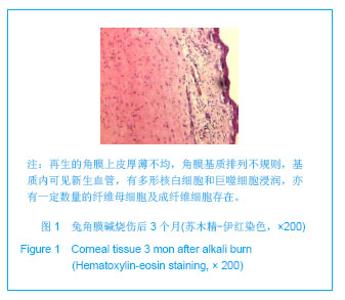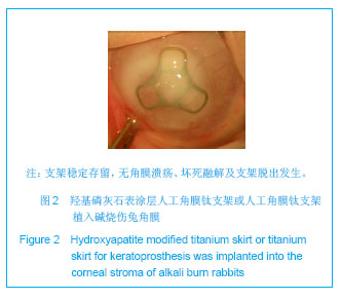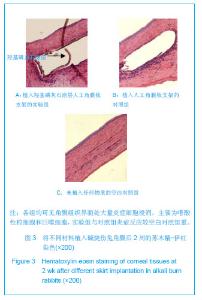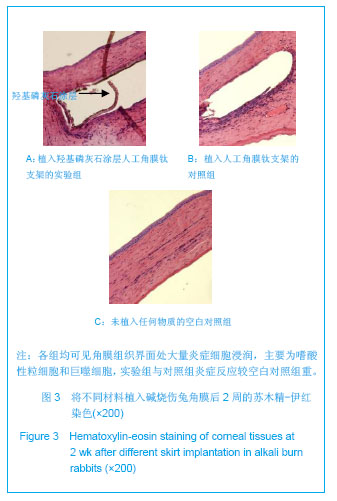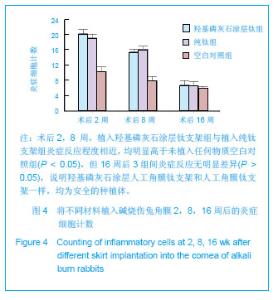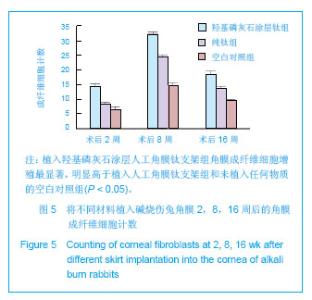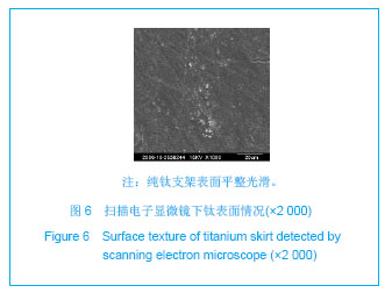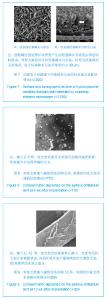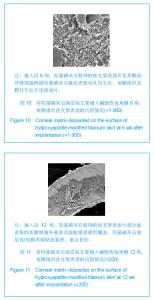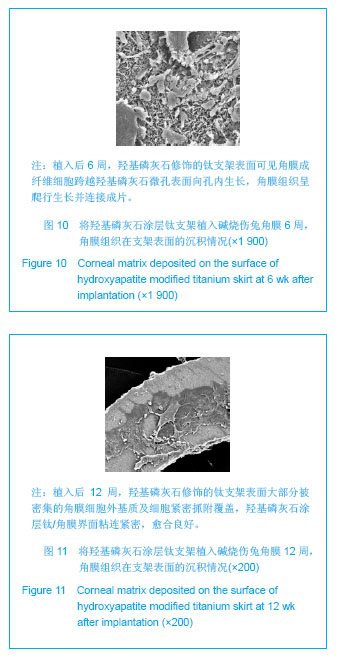| [1]黄一飞,王丽强,王凤翔.人工角膜植入术的临床研究[J].中华眼科杂志,2003, 39(10):9-12. [2]Huang YF,Yu JF,Liu L,et al.Moscow Eye Microsurgery Complex in Russia Keratoprosthesis in Beijing. Ophthalmology. 2011;118(1):41-46. [3]Dong Y,Huang YF,Wang LQ,et al.Long-term outcomes of MICOF keratoprosthesis in the end stage of autoimmune dry eyes: an experience in China.Br J Ophthalmol.2012;96:28-33.[4]Kasemo B.Biological surface science.Surface Science.2002; 500:656- 677.[5]Puleo DA,Nanci A.Understanding and controlling the bone}implant interface. Biomaterials.1999;20:2311-2321.[6]Wen HB,Liu Q,De Wijn JR,et al.Preparation of bioactive microporous titanium surface by a new two-step chemical treatment.J Mater Sci Mater Med.1998; 9(3):121-128.[7]Ilhan-Sarac O.Akpek EK.Current concepts and techniques in keratoprosthesis. Curr Opin Ophthalmol.2005;16(4):246-250.[8]Sandeman SR,Lloyd AW,Tighe BJ,et al.A model for the preliminary biological screening of potential keratoprosthetic biomaterials.Biomaterials.2003; 24(26):4729-4739.[9]Stoiber J,Forstner R,Csáky D,et al.Evaluation of Bone Reduction in Osteo-Odontokeratoprosthesis (OOKP) by three dimensional Computed Tomography.Cornea.2003;22(2):126-130.[10]Ma X,Li ZH,Huang YF,et al.Hydroxyapatite modified titanium promotes superior adhension and proliferation of corneal fibroblast in comparison with pure titanium.Int J Ophthalmol. 2007;7(1):6-9.[11]Sandeman SR,Lloyd AW,Tighe BJ,et al.A model for the preliminary biological screening of potential keratoprosthetic biomaterials.Biomaterials.2003; 24(26):4729-4739.[12]Marques AP,Reis RL,Hunt JA.The biocompatibility of novel starchbased polymers and composites: In vivo studies. Biomaterials.2002;23(6):1471-1478.[13]Pu FR,Williams RL,Markkula TK,et al.Expression of leukocyte-endothelial cell adhesion molecules on monocyte adhesion to human endothelial cells on plasma treated PET and PTFE in vitro.Biomaterials.2002;23:4705-4718.[14]Linnola RJ,Happonen RP,Andersson OH,et al.Titanium and bioactive glass-ceramic coated titanium as materials for keratoprosthesis.Exp Eye Res.1996;63:471-478.[15]Sletteberg O,Hovding G,Bertelsen T.Keratoprosthesis. I. Results obtained after implantation of 12 one-piece prostheses. A retrospective, follow-up study.Acta Ophthalmol Copenh.1990;68:369-374.[16]Zhao J,Lu X,Duan K,et al.Improving mechanical and biological properties of macroporous HA scaffolds through composite coatings.Colloids Surf B Biointerfaces.2009;74(1): 159-166.[17]Hicks CR,Vijayasekaran S,Chirila TV,et al.Implantation of PHEMA keratoprostheses after alkali burns in rabbit eyes. Cornea.1998; 17(3):301-308. |
